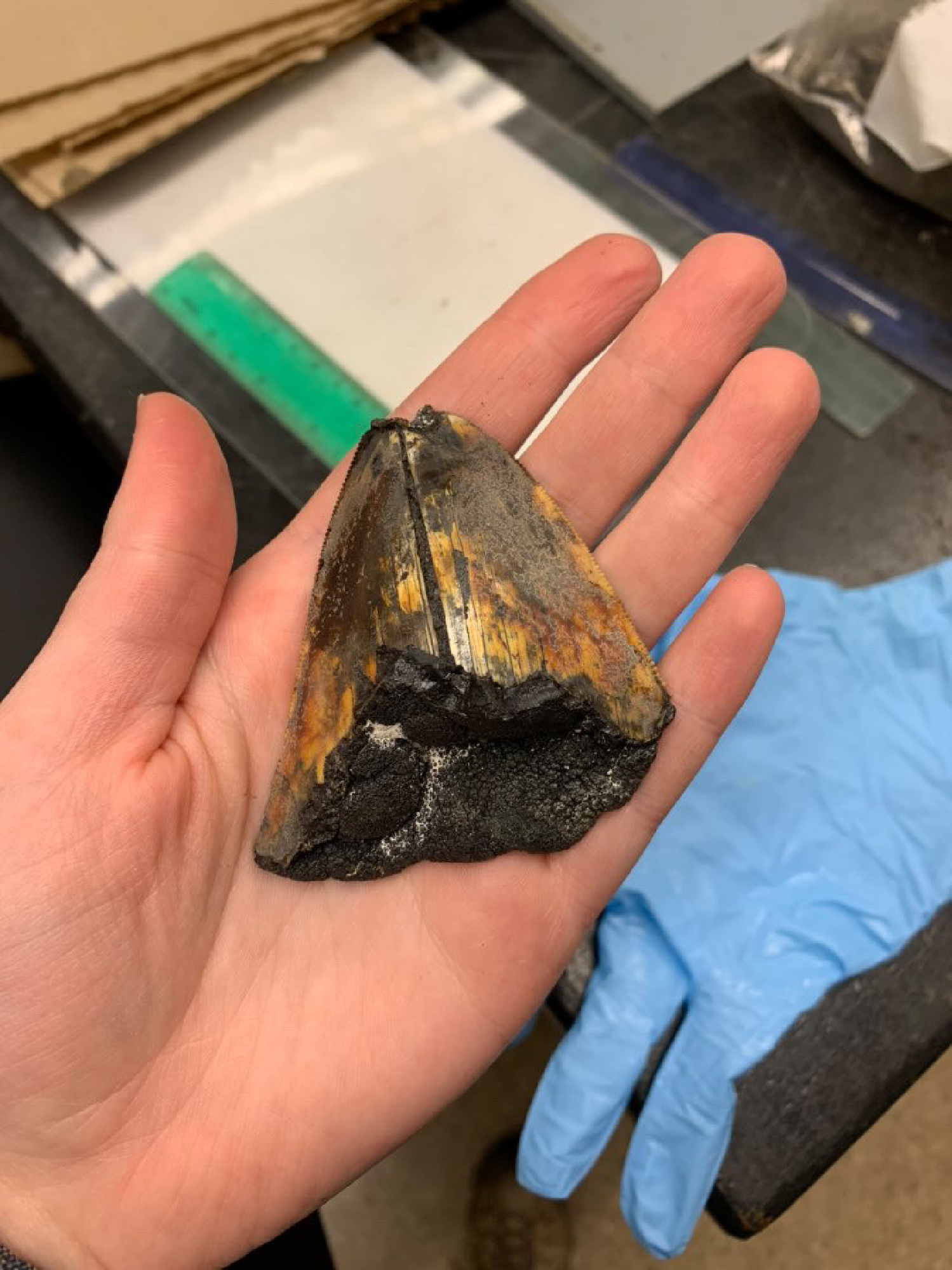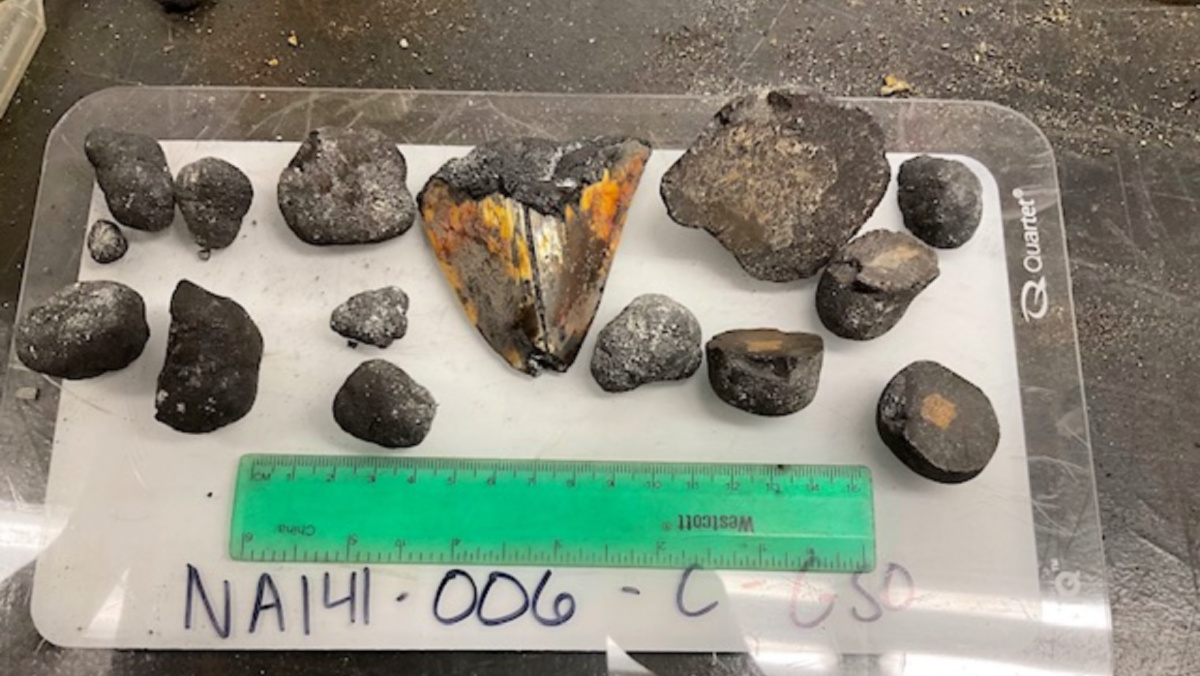Usually, divers, beachgoers, and anglers come across teeth from these extinct marine superpredators. This time, a robotic shovel scooped one off the ocean floor

Megalodon teeth dwarf great white shark teeth. Mark Kositch / Adobe Stock
Ask any marine enthusiast about the most terrifying ocean predator of all time, and they won’t talk about a great white shark. Instead, they’ll probably name the great white’s ancient competitor, megalodon. If you’re unfamiliar, Otodus megalodon is an extinct shark species that made great whites look like piranhas. They died out over 3 million years ago, but people still occasionally find their teeth, which are often the size of the hand that picks them up.
Researchers published a study in Historical Biology on Dec. 14 documenting the first-ever “in situ” megalodon tooth discovery from a previously unexplored location in the Pacific Ocean. The June 2022 discovery involved a team of deep-sea researchers with the Ocean Exploration Trust who were collecting samples from around the Johnson Atoll, which lies in the middle of the South Pacific west of Hawaii.
After reaching the remote reef in their exploration vessel Nautilus, they used a remotely operated vehicle named Hercules to shovel rocks and sediment from the ocean floor over 10,000 feet below the surface. When scientists at the University of Rhode Island later inspected the samples, they found a series of uniform serrated edges under the outer crust of one of the rocks. The rock turned out to be 3.5-million-year-old fossilized megalodon tooth that researchers estimate would have measured almost 4 inches long and 3 inches wide before all those millennia underwater took their toll.

Despite being almost wholly encrusted in an alloy of iron and manganese, as the article points out, the tooth’s long lifespan was uneventful.
“The well-preserved serration of the cutting edges suggests that the tooth did not undergo large transportation or drifting from which abrasion of the cutting edges would be expected,” the article reads. “Exposure of the cutting edge indicates that the sampling location did not accumulate overlying sediment, despite a minimum age of the fossil tooth of 3.5 million years of age.”
In layman’s terms, the tooth was mostly stationary during all that time, since the serrated edges are still so defined. If the tooth had rolled around on the ocean floor or been in a more turbulent spot where sediment kicked up more frequently, it might not have been in such good shape. And for some reference on just how long 3.5 million years actually is, modern humans didn’t evolve until 90 percent of that timespan had come and gone.

This is thought to be the first time a megalodon tooth was collected from its original resting spot, which is what “in situ discovery” means. Most of the other discoveries happened on beaches at low tide, on fishing boats, or on dives, all in spots where teeth were likely deposited after being picked up and moved by a current or some disruptive underwater event. Finding a needle in a haystack would be easier to replicate than what the Nautilus staff pulled off.
“This is an amazing find and is interesting in several aspects,” Nicolas Straube, an associate professor at the University Museum Bergen in Norway and co-author of the study, says in a press release. “The fossil was discovered at a very remote deep-sea locality from which megalodon fossils are rarely documented.”
Read Next: The Ultimate Guide to Great White Shark Attacks
While much about megalodon remains unknown, scientists hypothesize they ruled the world’s oceans from 3.5 million years ago to 20 million years ago. They likely grew up to 60 feet long, or three times the size of the today’s biggest great white sharks. Sure, that’s a little shorter than how they’re depicted in the 2023 box office smash hit Megalodon: The Frenzy. But if you came face-to-face with one in the deep ocean, 60 feet or 600 feet wouldn’t make much of a difference for your odds of survival.
